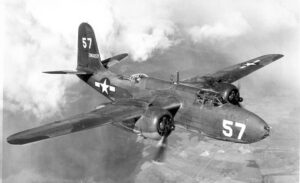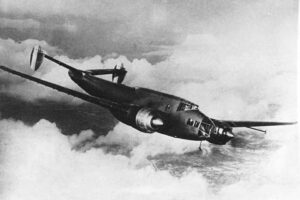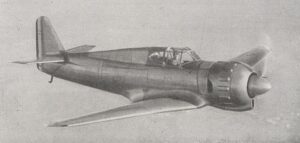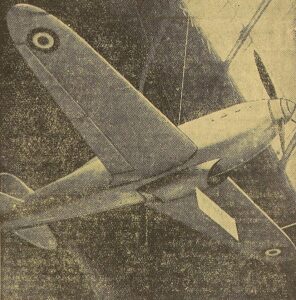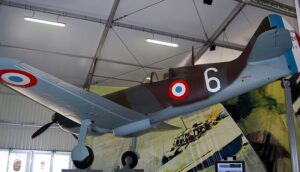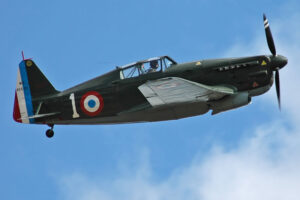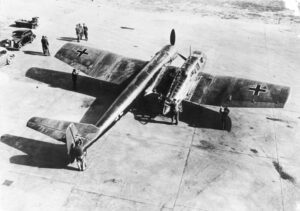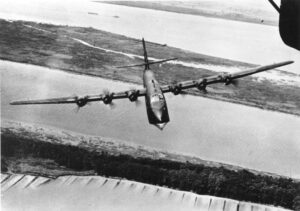Time Period: World War II (WW2)
Country of Origin: United Kingdom
Type: Fighter Aircraft, Interceptor Aircraft
Manufacturer: Supermarine
Supermarine Spitfire Aircraft Overview
The Royal Air Force and other Allies utilized the British Supermarine Spitfire as a single-seat fighter aircraft before, during, and after World War II. There were numerous Spitfire variations produced, ranging from the Mk 1 to the Rolls-Royce Griffon-powered Mk 24 with a variety of wing and cannon configurations. It was sturdy and versatile enough to accommodate progressively more potent Merlin engines and, in later models, Rolls-Royce Griffon engines with up to 2,340 horsepower (1,745 kW).
The Spitfire is still a favorite among fans, some 70 of which are still in flight, and many more are static exhibits in aviation museums throughout the globe. It was the only British fighter built consistently during the war.
A Short History of the Supermarine Spitfire
The Spitfire was created by R. J. Mitchell, head designer at Supermarine Aviation Works, which began operating as a Vickers-Armstrong subsidiary in 1928 as a short-range, high-performance interceptor aircraft. Mitchell created the characteristic elliptical wing of the Spitfire with ground-breaking buried rivets (created by Beverley Shenstone) to have the smallest cross-section feasible, achieving a potential top speed greater than that of numerous modern fighter aircraft, including the Hawker Hurricane. Joseph Smith, a colleague of Mitchell’s, took over as principal designer and oversaw the Spitfire’s development through a number of versions after Mitchell’s death in 1937.
The Spitfire’s design incorporated cutting-edge features for its time, including a sleek, aerodynamic fuselage, elliptical wings, and a powerful Rolls-Royce Merlin engine. These design elements contributed to the Spitfire’s exceptional speed, agility, and maneuverability, making it a formidable adversary in aerial combat.
The Spitfire made its maiden flight on March 5, 1936, and quickly garnered attention for its impressive performance during test flights. As production ramped up, the aircraft entered service with the RAF in August 1938, just months before the outbreak of World War II.
The Supermarine Spitfire During WW2
The Spitfire replaced the Hurricane as the primary aircraft of RAF Fighter Command following the Battle of Britain and saw action in the European, Mediterranean, Pacific, and South-East Asian theatres.
The Spitfire, which was well-liked by its pilots, served as an interceptor, photo-reconnaissance aircraft, fighter bomber, and trainer into the 1950s. From 1942 until the middle of the 1950s, the Seafire, an adaptation of the Spitfire designed for aircraft carriers, was employed by the Fleet Air Arm.
Supermarine Spitfire Mk Vb Specifications
- Crew: 1
- Length: 29 ft 11 in (9.12 m)
- Wingspan: 36 ft 10 in (11.23 m)
- Height: 11 ft 5 in (3.48 m)
- Wing area: 242.1 sq ft (22.49 m2)
- Airfoil: root: NACA 2213; tip: NACA 2209.4
- Empty weight: 5,065 lb (2,297 kg)
- Gross weight: 6,622 lb (3,004 kg)
- Max takeoff weight: 6,700 lb (3,039 kg)
- Powerplant: 1 × Rolls-Royce Merlin 45 V-12 liquid-cooled piston engine, 1,470 hp (1,100 kW)
- Propellers: 3-bladed Rotol constant-speed propeller
Supermarine Spitfire Mk Vb Performance
- Maximum speed: 370 mph (600 km/h, 320 kn)
- Range: 479 mi (771 km, 416 nmi)
- Combat range: 248 mi (399 km, 216 nmi)
- Ferry range: 1,100 mi (1,800 km, 960 nmi) with fuel tank
- Service ceiling: 36,500 ft (11,100 m)
- Rate of climb: 2,600 ft/min (13 m/s)
- Wing loading: 27.35 lb/sq ft (133.5 kg/m2)
- Power/mass: 0.22 hp/lb (0.36 kW/kg)
Supermarine Spitfire Mk Vb Armament
- Guns:
- A wing: 8 × .303 in Browning Mk II* machine guns (350 rounds per gun)
- B wing: 2 × 20 mm Hispano Mk II (60 rounds per gun). 4 × .303 in Browning Mk II* machine guns (350 rounds per gun)
- C wing: 4 × 20 mm Hispano Mk II cannon (120 rounds per gun)
- C wing (Alt.). 2 × 20 mm Hispano Mk II (120 rounds per gun). 4 × .303 in Browning Mk II* machine guns (350 rounds per gun)
- E wing: 2 × 20 mm Hispano Mk II cannon (120 rounds per gun). 2 × .50 in M2 Browning machine guns (250 rounds per gun)
- Rockets: 2 RP-3 rockets (1 under each wing)
Spitfire Image Gallery
Related Articles
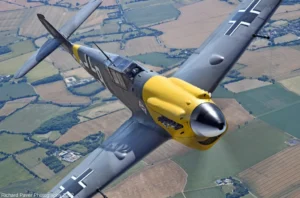
Where to Fly a Spitfire in the United Kingdom – All Options Rated
A guide to all the Spitfire flight experiences in the UK, including prices and best places where you can fly this iconic aircraft.
More Messerschmitt Aircraft
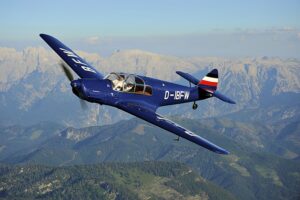
Messerschmitt Bf 108 Taifun
The Messerschmitt Bf 108 was a German single-engine aircraft developed by Bayerische Flugzeugwerke in the 1930s.
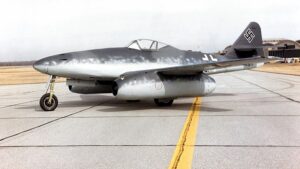
Messerschmitt Me 262 Sturmvogel
The Messerschmitt Me 262 Sturmvogel is a fighter bomber aircraft and the world’s first jet-powered fighter aircraft.
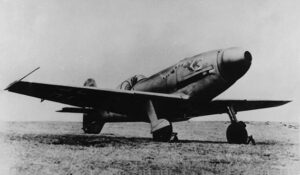
Messerschmitt Me 209
The Messerschmitt Me 209 was a German single-engine racing aircraft designed to break speed records and used as a propaganda tool in WW2.
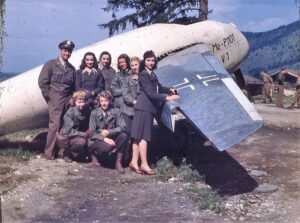
Messerschmitt P.1101
The Messerschmitt P.1101 was a single-seat jet fighter developed by Messerschmitt for the Third Reich during the Second World War.
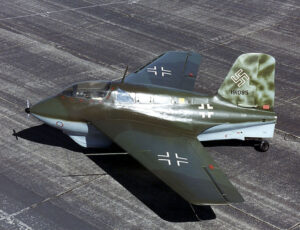
Messerschmitt Me 163 Komet
The Messerschmitt Me 163 Komet was a German rocket-powered interceptor aircraft primarily used by the Luftwaffe in the 1940s.
More Supermarine Aircraft
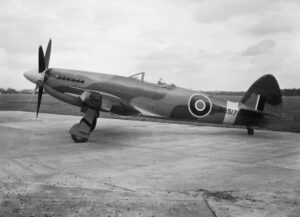
Supermarine Spiteful
The Supermarine Spiteful was a British Griffon-engined fighter aircraft designed by Supermarine and used during the Second World War.
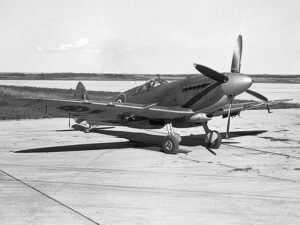
Supermarine Seafire
The Supermarine Seafire was a naval version of the Supermarine Spitfire and the Hawker Hurricane. It was used during World War II.



